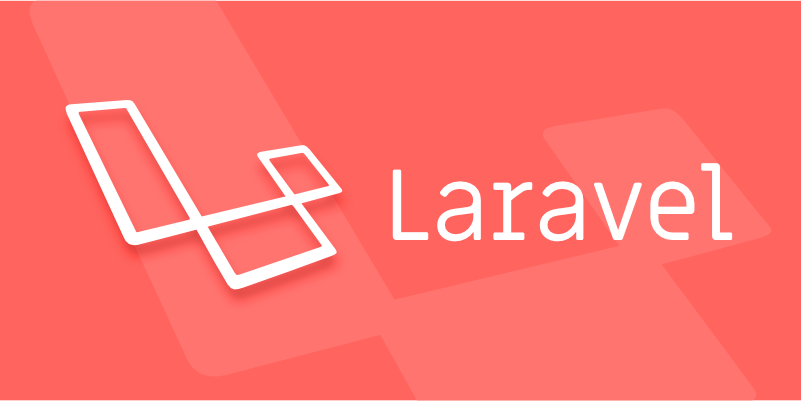The cache settings in Laravel can be achieved by selecting the appropriate cache driver and correctly configuring it. First, select drivers according to application needs: the development environment can use file or array, and the production environment recommends using Redis because it is fast and supports tag function; second, the settings are completed by modifying the CACHE_DRIVER value in the .env file and configuring the connection information in config/cache.php; finally, cache operations are performed using the put(), get() or remember() methods of the Cache facade. Redis users can use tags to manage related cache items. At the same time, you should pay attention to avoid common errors such as improper configuration, untimely processing of data expiration and excessive cache.

Caching is a powerful tool in Laravel that helps improve performance by temporarily storing data that's expensive to retrieve or compute. If you're setting up caching in Laravel, choosing and configuring the right cache driver is key.

Choosing a Cache Driver
Laravel supports several cache drivers out of the box: file, database, apc, memcached, redis, and array. Which one you pick depends on your application's needs and environment.

- File : Simplest option, stores cache in files under
storage/framework/cache/data. Works well for small apps in development. - Database : Stores cache in a table. Useful when you already have a database set up and want persistence across deployments.
- Redis / Memcached : Fast, in-memory options suitable for production. Redis supports tagging, which Memcached doesn't.
- APC : PHP accelerator-based caching; not commonly used anymore unless shared hosting restrictions other choices.
- Array : In-memory cache that resets on every request — mostly used for testing.
For most production applications, Redis is recommended due to its speed and advanced features like atomic expiration and tagging.
Configuring the Cache Driver
To configure your cache driver, open the .env file and change the CACHE_DRIVER value:

CACHE_DRIVER=redis
Then check your config/cache.php file to make sure the settings match your needs. For example, if using Redis, ensure the Redis connection details are correct under the stores.redis array.
If you're using a database driver, don't forget to create the required table. Laravel provides a migration for this:
php artisan cache:table php artisan migrate
This creates a cache table in your database with columns for the key, value, and expiration time.
Basic Usage of the Cache Facade
Once configured, you can start using the Cache facade to store and retrieve data. The simplest way is using put() and get() :
// Storing an item Cache::put('user_profile_123', $userData, 60); // expires in 60 minutes // Retrieving an item $userData = Cache::get('user_profile_123');
You can also use remember() to retrieve or store an item in one step:
$userData = Cache::remember('user_profile_123', 60, function () {
return User::find(123)->profile;
});This tries to get the item from the cache. If it doesn't exist, it runs the closure, stores the result, and returns it.
If you're using Redis and need to manage related cache entries, consider using cache tags:
Cache::tags(['users'])->put('user_profile_123', $userData, 60); Cache::tags(['users'])->flush(); // Clears all user-related cache
Note: Tags only work with drivers that support them — Redis does, but Memcached and Database do not.
Common Pitfalls and Tips
A few common issues pop up when working with caching:
- Wrong driver configuration — Make sure your Redis or Memcached server is running and accessible.
- Stale data — Use appropriate TTL (Time To Live) values ??and flush caches when needed, especially after updates.
- Over-caching — Don't cache everything. Frequently changing or user-specific data may not benefit from caching.
- Testing confusion — In local environments, file or array drivers are fine, but behavior might different from production.
Also, remember that some cache drivers (like Redis) serialize data automatically, so complex objects should be handled carefully.
Basically that's it. Setting up caching in Laravel isn't hard, but getting it right takes attention to detail — especially around expiration, invalidation, and driver capabilities.
The above is the detailed content of Configuring Cache Drivers and Usage in Laravel?. For more information, please follow other related articles on the PHP Chinese website!

Hot AI Tools

Undress AI Tool
Undress images for free

Undresser.AI Undress
AI-powered app for creating realistic nude photos

AI Clothes Remover
Online AI tool for removing clothes from photos.

Clothoff.io
AI clothes remover

Video Face Swap
Swap faces in any video effortlessly with our completely free AI face swap tool!

Hot Article

Hot Tools

Notepad++7.3.1
Easy-to-use and free code editor

SublimeText3 Chinese version
Chinese version, very easy to use

Zend Studio 13.0.1
Powerful PHP integrated development environment

Dreamweaver CS6
Visual web development tools

SublimeText3 Mac version
God-level code editing software (SublimeText3)

Hot Topics
 What are routes in Laravel, and how are they defined?
Jun 12, 2025 pm 08:21 PM
What are routes in Laravel, and how are they defined?
Jun 12, 2025 pm 08:21 PM
In Laravel, routing is the entry point of the application that defines the response logic when a client requests a specific URI. The route maps the URL to the corresponding processing code, which usually contains HTTP methods, URIs, and actions (closures or controller methods). 1. Basic structure of route definition: bind requests using Route::verb('/uri',action); 2. Supports multiple HTTP verbs such as GET, POST, PUT, etc.; 3. Dynamic parameters can be defined through {param} and data can be passed; 4. Routes can be named to generate URLs or redirects; 5. Use grouping functions to uniformly add prefixes, middleware and other sharing settings; 6. Routing files are divided into web.php, ap according to their purpose
 What are policies in Laravel, and how are they used?
Jun 21, 2025 am 12:21 AM
What are policies in Laravel, and how are they used?
Jun 21, 2025 am 12:21 AM
InLaravel,policiesorganizeauthorizationlogicformodelactions.1.Policiesareclasseswithmethodslikeview,create,update,anddeletethatreturntrueorfalsebasedonuserpermissions.2.Toregisterapolicy,mapthemodeltoitspolicyinthe$policiesarrayofAuthServiceProvider.
 How do I create new records in the database using Eloquent?
Jun 14, 2025 am 12:34 AM
How do I create new records in the database using Eloquent?
Jun 14, 2025 am 12:34 AM
To create new records in the database using Eloquent, there are four main methods: 1. Use the create method to quickly create records by passing in the attribute array, such as User::create(['name'=>'JohnDoe','email'=>'john@example.com']); 2. Use the save method to manually instantiate the model and assign values ??to save one by one, which is suitable for scenarios where conditional assignment or extra logic is required; 3. Use firstOrCreate to find or create records based on search conditions to avoid duplicate data; 4. Use updateOrCreate to find records and update, if not, create them, which is suitable for processing imported data, etc., which may be repetitive.
 How do I run seeders in Laravel? (php artisan db:seed)
Jun 12, 2025 pm 06:01 PM
How do I run seeders in Laravel? (php artisan db:seed)
Jun 12, 2025 pm 06:01 PM
Thephpartisandb:seedcommandinLaravelisusedtopopulatethedatabasewithtestordefaultdata.1.Itexecutestherun()methodinseederclasseslocatedin/database/seeders.2.Developerscanrunallseeders,aspecificseederusing--class,ortruncatetablesbeforeseedingwith--trunc
 What is the purpose of the artisan command-line tool in Laravel?
Jun 13, 2025 am 11:17 AM
What is the purpose of the artisan command-line tool in Laravel?
Jun 13, 2025 am 11:17 AM
Artisan is a command line tool of Laravel to improve development efficiency. Its core functions include: 1. Generate code structures, such as controllers, models, etc., and automatically create files through make: controller and other commands; 2. Manage database migration and fill, use migrate to run migration, and db:seed to fill data; 3. Support custom commands, such as make:command creation command class to implement business logic encapsulation; 4. Provide debugging and environment management functions, such as key:generate to generate keys, and serve to start the development server. Proficiency in using Artisan can significantly improve Laravel development efficiency.
 How do I install Laravel on my operating system (Windows, macOS, Linux)?
Jun 19, 2025 am 12:31 AM
How do I install Laravel on my operating system (Windows, macOS, Linux)?
Jun 19, 2025 am 12:31 AM
Yes,youcaninstallLaravelonanyoperatingsystembyfollowingthesesteps:1.InstallPHPandrequiredextensionslikembstring,openssl,andxmlusingtoolslikeXAMPPonWindows,HomebrewonmacOS,oraptonLinux;2.InstallComposer,usinganinstalleronWindowsorterminalcommandsonmac
 How do I define methods (actions) in a controller?
Jun 14, 2025 am 12:38 AM
How do I define methods (actions) in a controller?
Jun 14, 2025 am 12:38 AM
Defining a method (also known as an action) in a controller is to tell the application what to do when someone visits a specific URL. These methods usually process requests, process data, and return responses such as HTML pages or JSON. Understanding the basic structure: Most web frameworks (such as RubyonRails, Laravel, or SpringMVC) use controllers to group related operations. Methods within each controller usually correspond to a route, i.e. the URL path that someone can access. For example, there may be the following methods in PostsController: 1.index() – display post list; 2.show() – display individual posts; 3.create() – handle creating new posts; 4.u
 How do I run tests in Laravel? (php artisan test)
Jun 13, 2025 am 12:02 AM
How do I run tests in Laravel? (php artisan test)
Jun 13, 2025 am 12:02 AM
ToruntestsinLaraveleffectively,usethephpartisantestcommandwhichsimplifiesPHPUnitusage.1.Setupa.env.testingfileandconfigurephpunit.xmltouseatestdatabaselikeSQLite.2.Generatetestfilesusingphpartisanmake:test,using--unitforunittests.3.Writetestswithmeth






